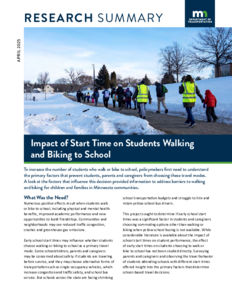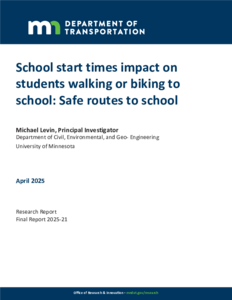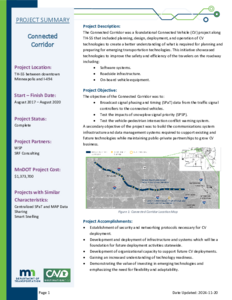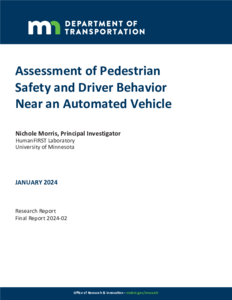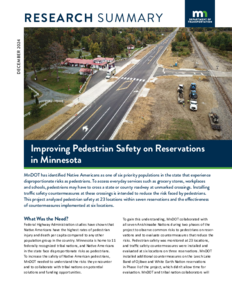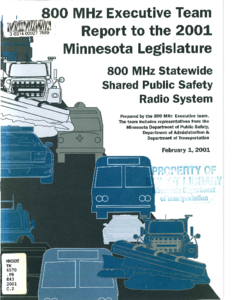School start times impact on students walking or biking to school: Safe routes to school
Date Created
2025-04
Report Number
2025-21
Description
Assessment of Pedestrian Safety and Driver Behavior Near an Automated Vehicle
Date Created
2024-01
Report Number
2024-02
Description
800 MHz Executive Team Report to the 2001 Minnesota Legislature: 800 MHz Statewide Shared Public Safety Radio System
Creator
Date Created
2001-02
Description

